Film Reviews
Monday, October 8, 2012
Film / Film Reviews Halloween Countdown: Week 1 Recommendations
Posted By Matt Brunson on Mon, Oct 8, 2012 at 10:00 AM
(In anticipation of the coolest day of the year, this month-long series will offer one recommended horror flick a day up through Oct. 31 Here are the films that were selected Oct. 1-7. Click on the title to be taken to the review.)

Oct. 1: Day of the Dead (1985)
Oct. 2: Brotherhood of the Wolf (2001)
Oct. 3: The Thing from Another World (1951)
Oct. 4: Count Dracula (1970)
Oct. 5: Cat People (1942)
Oct. 6: Homicidal (1961)
Oct. 7: The Phantom of the Opera (1925)
Sunday, October 7, 2012
Film / Film Reviews Halloween Countdown: The Phantom of the Opera
Posted By Matt Brunson on Sun, Oct 7, 2012 at 2:00 PM
(In anticipation of the coolest day of the year, this month-long series will offer one recommended horror flick a day up through Oct. 31.)
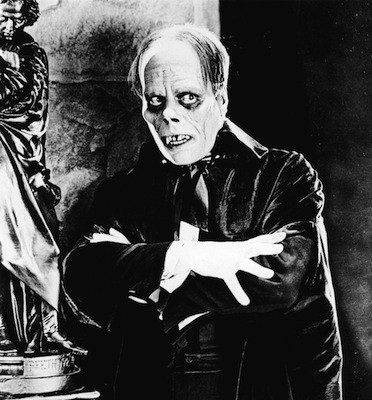
THE PHANTOM OF THE OPERA (1925). One of the landmarks of silent cinema, this adaptation of Gaston Leroux's novel was also the film that firmly cemented Lon Chaney's reputation as a superstar as well as set the stage for Universal Pictures to continue producing definitive horror classics throughout the 1930s and 1940s. If it wasn’t quite the match of the fright fests that were being made over in Europe during this decade (Nosferatu, The Cabinet of Dr. Caligari), it was certainly one of the most epic American undertakings this side of D.W. Griffith and Cecil B. DeMille, with the Paris Opera and surrounding streets beautifully recreated on the studio lot and populated with that literal cast of thousands. There have been approximately a dozen screen versions of the story, but not one of the subsequent actors to essay the role of the Phantom — among them Robert Englund and Gerard Butler — came close to matching Chaney's brilliant portrayal. (Best among the runners-up was Claude Rains in the 1943 interpretation, largely playing up the tragic rather than horrific dimensions of the character.) Chaney, who also created his own makeup, is mesmerizing as Erik, the disfigured underground dweller who won't let anything stand in the way of his love for a singer named Christine (Mary Philbin). The picture admittedly suffers whenever Chaney's not around, but his string of remarkable sequences — including his unmasking at the organ and his entrance at the costume ball — make up for any shortcomings.
Saturday, October 6, 2012
Film / Film Reviews Halloween Countdown: Homicidal
Posted By Matt Brunson on Sat, Oct 6, 2012 at 2:00 PM
(In anticipation of the coolest day of the year, this month-long series will offer one recommended horror flick a day up through Oct. 31.)

HOMICIDAL (1961). Producer, director and consummate showman William Castle clearly was influenced by (and often mimicked) Alfred Hitchcock, and Homicidal is such a blatant rip-off of 1960's Psycho that a lawsuit probably wouldn't have been without merit. Yet while traveling along similar lines, Castle and scripter Robb White manage to include enough originality that the shock ending still has the power to catch many viewers off guard. Unlike Psycho, this film's central blonde (played by Joan Marshall) is villain rather than victim, yet there's still a squeaky-clean heroine, her dullard boyfriend, a crotchety old woman in a wheelchair, and a soft-spoken young man. To reveal more would be criminal.
Friday, October 5, 2012
Film / Film Reviews Weekend Film Reviews: Frankenweenie; Hotel Transylvania; Looper; Butter
Posted By Matt Brunson on Fri, Oct 5, 2012 at 5:21 PM
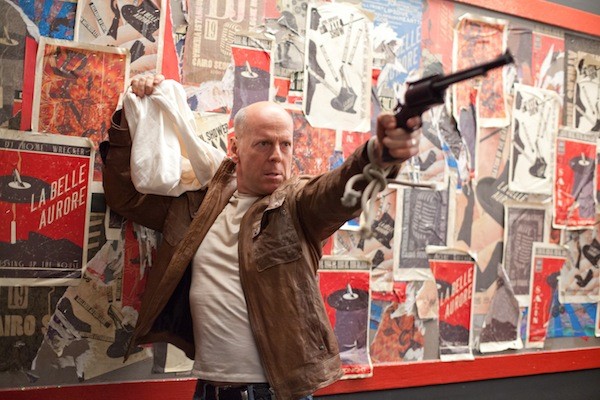
- Sony
- Looper
Click on the link to be taken directly to the review.
Film / Film Reviews Halloween Countdown: Cat People
Posted By Matt Brunson on Fri, Oct 5, 2012 at 2:00 PM
(In anticipation of the coolest day of the year, this month-long series will offer one recommended horror flick a day up through Oct. 31.)

CAT PEOPLE (1942). The first of producer Val Lewton's series of acclaimed horror films from the 1940s, Cat People remains a small masterpiece of the genre: No less than Martin Scorsese has stated that the movie is "as important as Citizen Kane in the maturation of the American cinema." It was a commercial bonanza for RKO, earning a whopping $4 million return on its $134,000 shooting budget and paving the way for Lewton to retain creative control on his followups. The alluring Simone Simon stars as Irena, an Eastern European immigrant who meets and marries an American architect (Kent Smith). Forced to remain celibate because of an ancestral curse that will turn her into a panther if her emotions are aroused, she grows jealous of her frustrated husband's attention toward a pretty co-worker (Jane Randolph); this in turn leads to the movie's two classic set pieces, one involving Randolph's walk down a dark city street, the other focusing on her nocturnal swim at an indoor pool that's surrounded by menacing shadows and an even more menacing growl. Simon's Irena makes for one of the most tragic heroines ever seen on screen — a woman who, through no fault of her own, is deprived of the love she hungrily seeks. The movie's strong sexual currents and adult subject matter (when you get down to it, this is a film about impotence), amplified by ace director Jacques Tourneur and scripter DeWitt Bodeen, further lift it above the realm of the usual spook show.
Thursday, October 4, 2012
Film / Film Reviews Halloween Countdown: Count Dracula
Posted By Matt Brunson on Thu, Oct 4, 2012 at 2:00 PM
(In anticipation of the coolest day of the year, this month-long series will offer one recommended horror flick a day up through Oct. 31.)
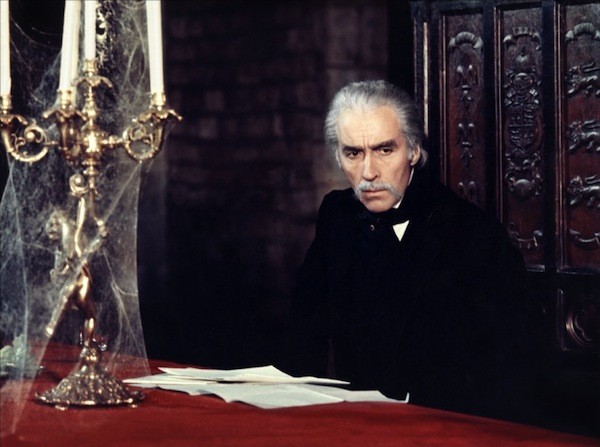
COUNT DRACULA (1970). While far from the upper echelons of the numerous Dracula films, I’m including it as a tribute to character actor Herbert Lom, who passed away last Thursday (Sept. 27) at the age of 95. In some respects one of the more faithful screen adaptations of Bram Stoker's Dracula, this English-language co-production of Spain, Italy and West Germany finds the prolific Jess Franco (with nearly 200 directing credits to his name) toning down his commonplace sex 'n' gore to present a stately version of the vampire classic. It's a good effort by all, even if it does fall short of complete success. Christopher Lee, who spent many years playing Dracula in Hammer Studios' successful franchise, here forsakes the animal magnetism and portrays the Count as a stuffy aristocrat who becomes visibly younger the more he drinks the blood of innocents. Franco provides an appropriately somber atmosphere for the proceedings, but an obvious low budget (the pack of wolves patrolling the terrain outside Dracula's castle is played by a pack of German shepherds) and wretched performances by the no-name actors in the supporting ranks seriously damage the picture's pedigree. Lom, best known as the twitching Chief Inspector Dreyfus in The Pink Panther series, was an interesting choice to play Professor Van Helsing (Franco originally tried to snag Vincent Price), while it's amusing to see Klaus Kinski as the insect-munching Renfield, nine years before he graduated to the role of bloodsucker in Werner Herzog's Nosferatu remake.
Wednesday, October 3, 2012
Film / Film Reviews Halloween Countdown: The Thing from Another World
Posted By Matt Brunson on Wed, Oct 3, 2012 at 2:00 PM
(In anticipation of the coolest day of the year, this month-long series will offer one recommended horror flick a day up through Oct. 31.)
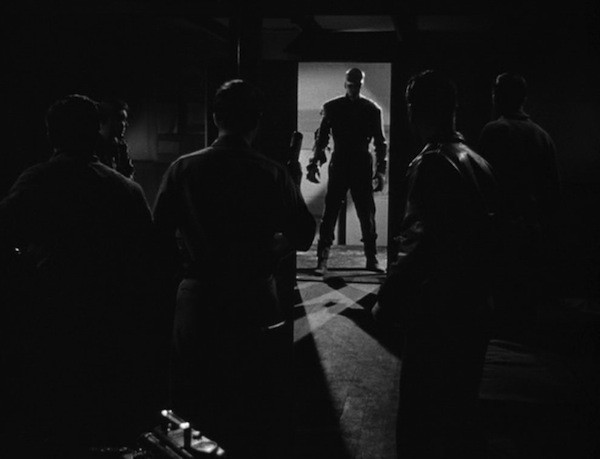
THE THING FROM ANOTHER WORLD (1951). Christian Nyby may be credited as director, but it's long been established that Howard Hawks (billed here as producer) was the one calling most of the shots on this horror/sci-fi hybrid. Certainly, the film fits right into his compendium of classics: Like Rio Bravo, The Big Sleep and oh-so-many-others, it features crackling dialogue, deliciously subversive humor, confident and competent heroes, and a healthy air of sexual playfulness between its romantic leads. Featuring James Arness (before Gunsmoke) as the deadly e.t. who makes life difficult for a group of soldiers and scientists huddled together at a North Pole research facility, this has endured largely because of all the top talent Hawks corralled for the project: ace cinematographer Russell Harlan (the sequence in which the men use fire to fight the alien is a standout of lighting and composition), top composer Dimitri Tiomkin (employing the theremin to great effect in his score) and revered screenwriter Charles Lederer. Equally recommended is John Carpenter’s excellent 1982 version (simply called The Thing), featuring Rob Bottin’s imaginative makeup effects and Ennio Morricone’s beautifully minimalist score. Best, however, to skip last year’s same-name prequel.
Tuesday, October 2, 2012
Film / Film Reviews Halloween Countdown: Brotherhood of the Wolf
Posted By Matt Brunson on Tue, Oct 2, 2012 at 2:00 PM
(In anticipation of the coolest day of the year, this month-long series will offer one recommended horror flick a day up through Oct. 31.)

BROTHERHOOD OF THE WOLF (2001). Movies that adopt an everything-but-the-kitchen-sink approach are often maddening messes, but this French import (original title: Le pacte des loups) is reminiscent of countless other films and yet still manages to retain its own swagger of originality. With a first half that plays like Sleepy Hollow, a second half that begs comparison to From Hell, and elements of Jaws, The Last of the Mohicans, The Company of Wolves and Crouching Tiger, Hidden Dragon scattered throughout, this delirious experience covers most bases and makes at least a cursory stab at the few it misses. In 18th century France, a naturist/philosopher (Samuel Le Bihan) and his Iroquois companion (Mark Dacascos) are sent by the royal court to investigate a series of slayings in the French countryside. The creature responsible is reportedly a monstrous wolf, but as the pair investigate, they discover that several of the locals may know more about the affair than they're admitting. This one's got it all: martial arts, political intrigue, tender romance (between Le Bihan and Rosetta's Emilie Dequenne), steamy sex scenes (between Le Bihan and Irreversible's Monica Bellucci), and a snapping, snarling, bloodthirsty beast.
Monday, October 1, 2012
Film / Film Reviews Halloween Countdown: Day of the Dead
Posted By Matt Brunson on Mon, Oct 1, 2012 at 2:00 PM
(In anticipation of the coolest day of the year, this month-long series will offer one recommended horror flick a day up through Oct. 31.)

DAY OF THE DEAD (1985). George Romero's 1968 Night of the Living Dead has long been considered a classic, as has its 1979 sequel Dawn of the Dead. As for this third installment — well, it's considered anything but a classic, yet it's better than the reputation it garnered upon its original release, when it quickly became apparent that this was the runt of its particular cinematic litter. Set in an underground military bunker, this finds a group of scientists, intent on studying the zombies in the hopes of finding a cure, engaged in a mental tug-of-war with the trigger-happy soldiers who would be just as content wiping out everybody (scientists and zombies alike) who vexes them. Largely missing is the primal horror of the first film and the sharp satire of the second, yet what remains isn't bad, with some of Romero's interesting ideas and Tom Savini's gory effects triumphing over some amateurish acting (major exception: Howard Sherman, who's effective, even touching, as Bub the domesticated zombie). Interestingly, this movie basically shares the same philosophy as the more recent — and more acclaimed — zombie flick 28 Days Later: A flesh-eating monster may be nobody's idea of a desirable companion, but he's no worse than a spirit-sapping military man.
Friday, September 28, 2012
Film / Film Reviews Weekend Film Reviews: Pitch Perfect; House at the End of the Street; Dredd
Posted By Matt Brunson on Fri, Sep 28, 2012 at 4:23 PM
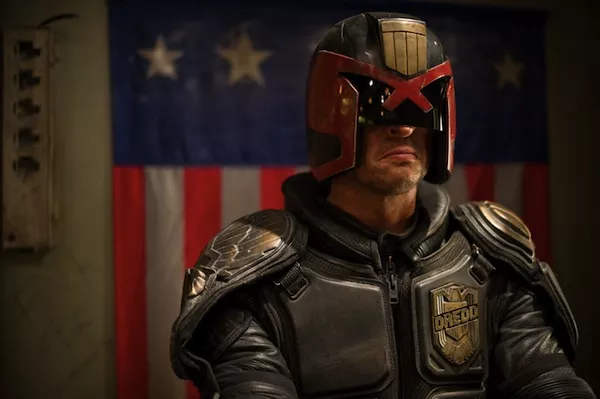
- Lionsgate
- Dredd
Click on the title to be taken directly to the review.





